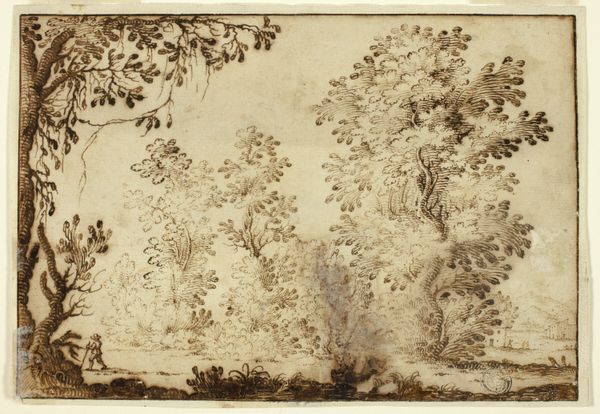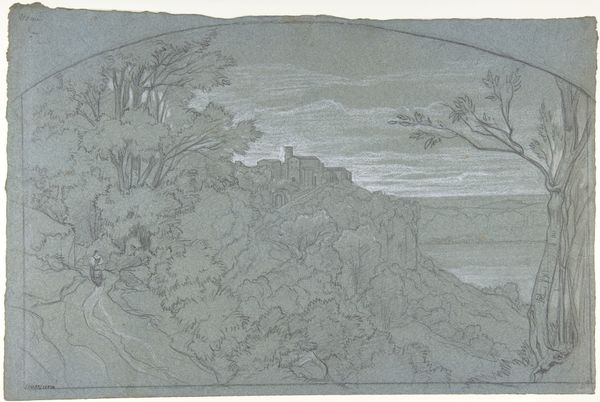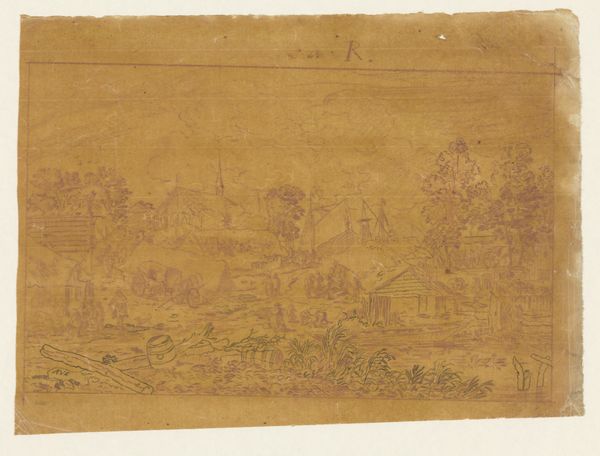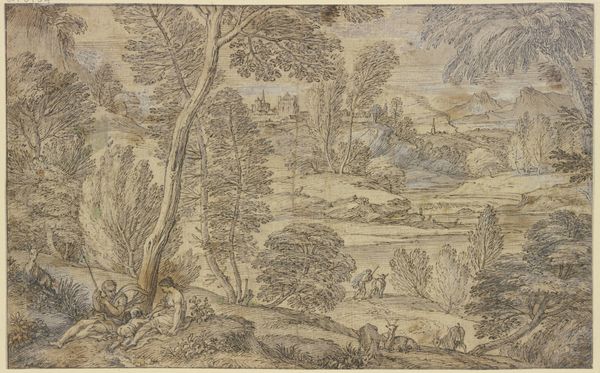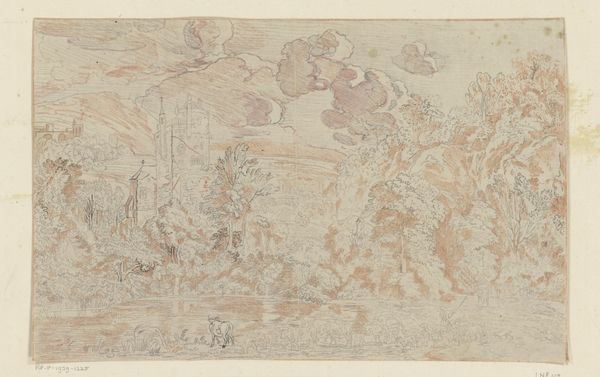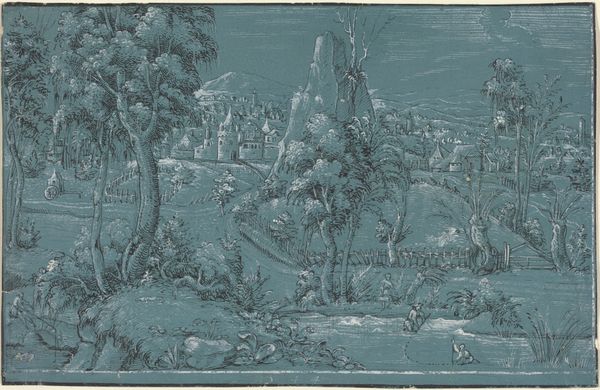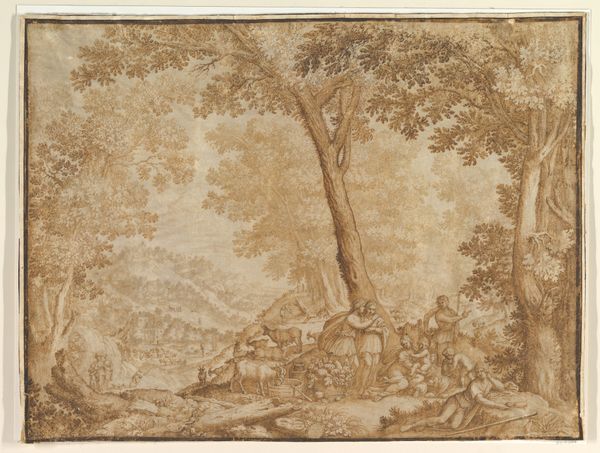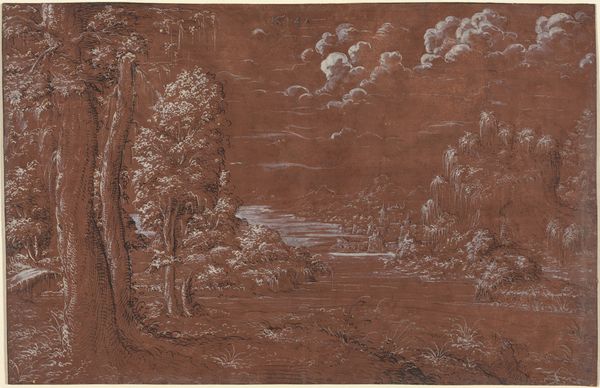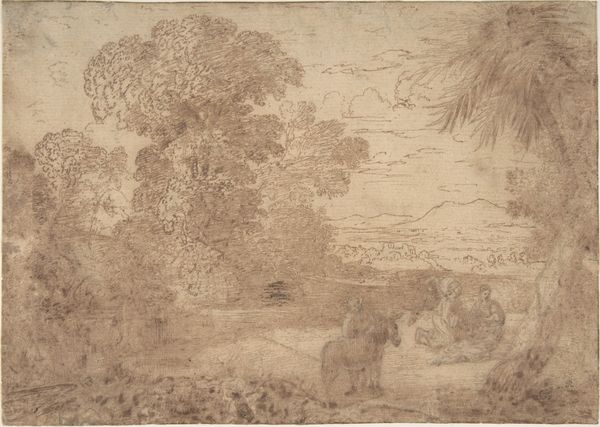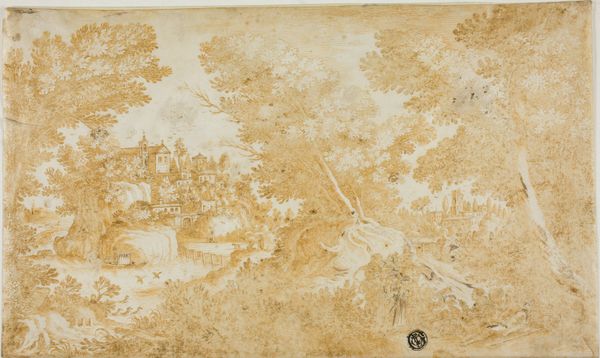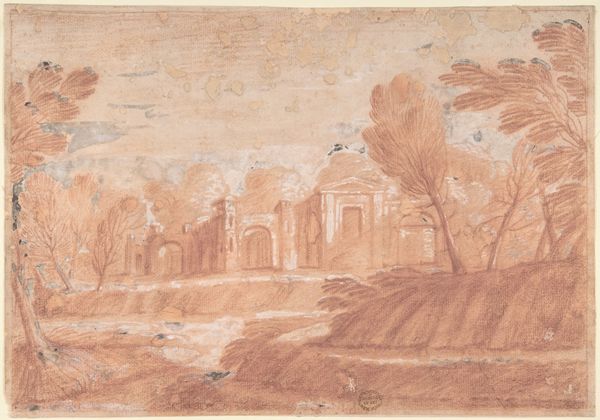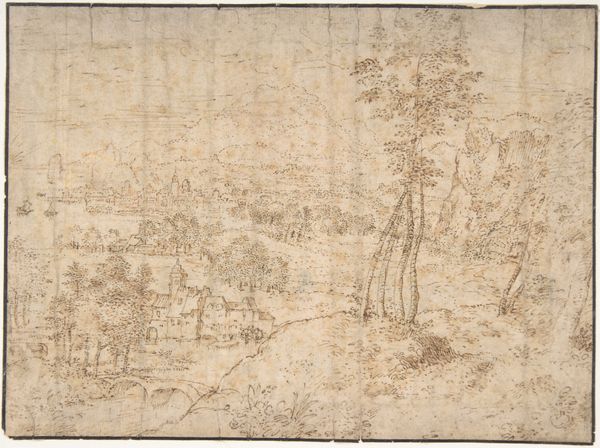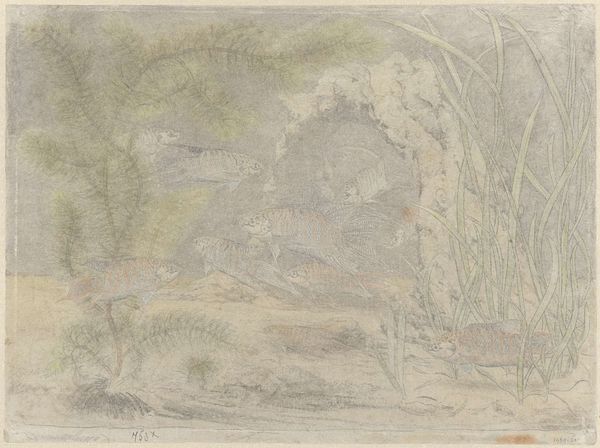
drawing, print, paper, watercolor
#
drawing
#
ink painting
# print
#
landscape
#
paper
#
watercolor
#
watercolour illustration
#
northern-renaissance
Dimensions: 12 11/16 x 14 3/16 in. (32.2 x 36 cm)
Copyright: Public Domain
Curator: Here at the Metropolitan Museum of Art, we have an interesting example of a Northern Renaissance landscape made with watercolor, ink, and paper attributed to Gillis van Coninxloo from the 16th century. What are your first impressions? Editor: An intriguing mood piece! Its washes of blue and brown give a distinctive atmospheric perspective and somewhat muted, melancholic feel. It suggests the ephemeral nature of the landscape itself. Curator: The piece shows the influence of early landscape painters interested in nature and space. Can you see how it focuses attention on depth and perspective to communicate more clearly and evocatively than just describing what you see? Editor: Indeed! Its appeal lies in that attempt to create a naturalistic portrayal of space while also inviting us to think about how humans interact with these spaces, considering landscape paintings were initially often included as backgrounds in history or portrait paintings, to imbue them with extra layers of narrative context. I wonder what relationship, either metaphorical or literal, exists between that implied, populated city and the empty grove on the other side of the composition. Curator: That is part of why art historians are very keen on Coninxloo; he moved the style from secondary illustration into independent subject matter in and of itself. His compositions are all carefully constructed around visual axes, planes of interest, and depth. Editor: Absolutely, which I suppose reflects the evolving societal perceptions of the era. What I also observe, however, are the environmental implications – this painting reminds me how different our landscapes were even just a few centuries ago, which speaks to the profound transformations in ecological thinking happening today. Curator: It does offer a powerful sense of connection to historical perspectives. We may indeed benefit from thinking of our place within the grand sweep of history by experiencing artwork like this. Editor: Absolutely. The artwork really bridges the gap between historical understanding and the realities of contemporary ecological thinking, reminding us of the ongoing narrative of our environment.
Comments
No comments
Be the first to comment and join the conversation on the ultimate creative platform.
